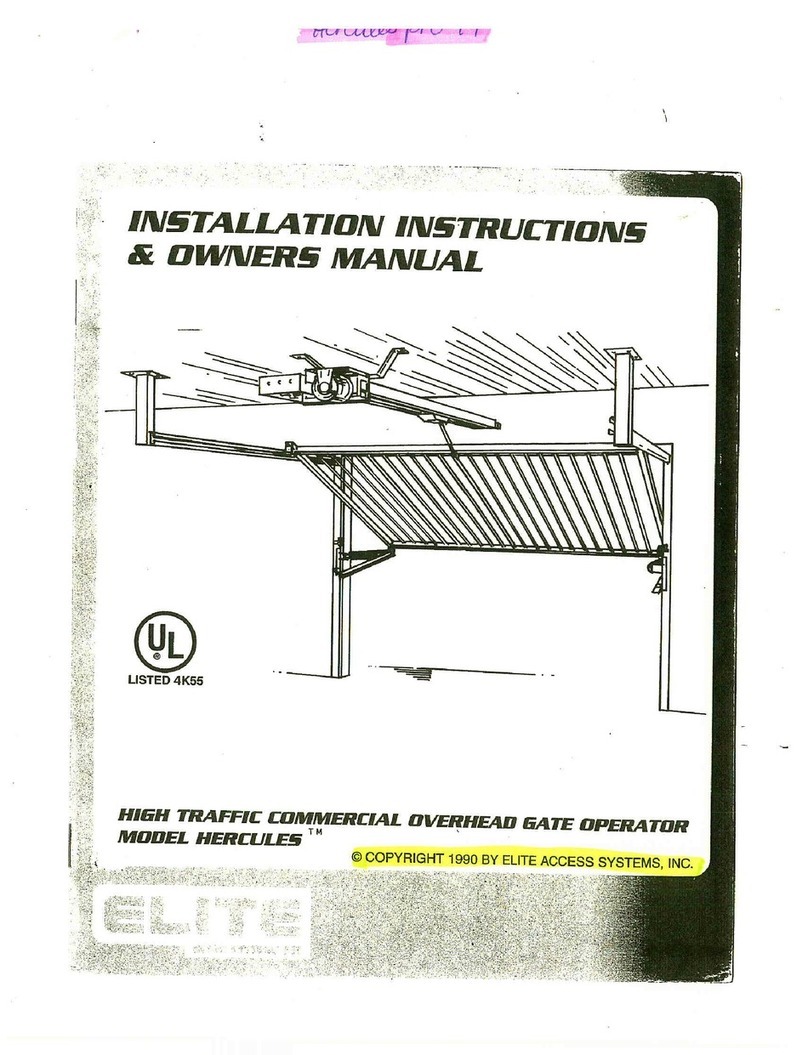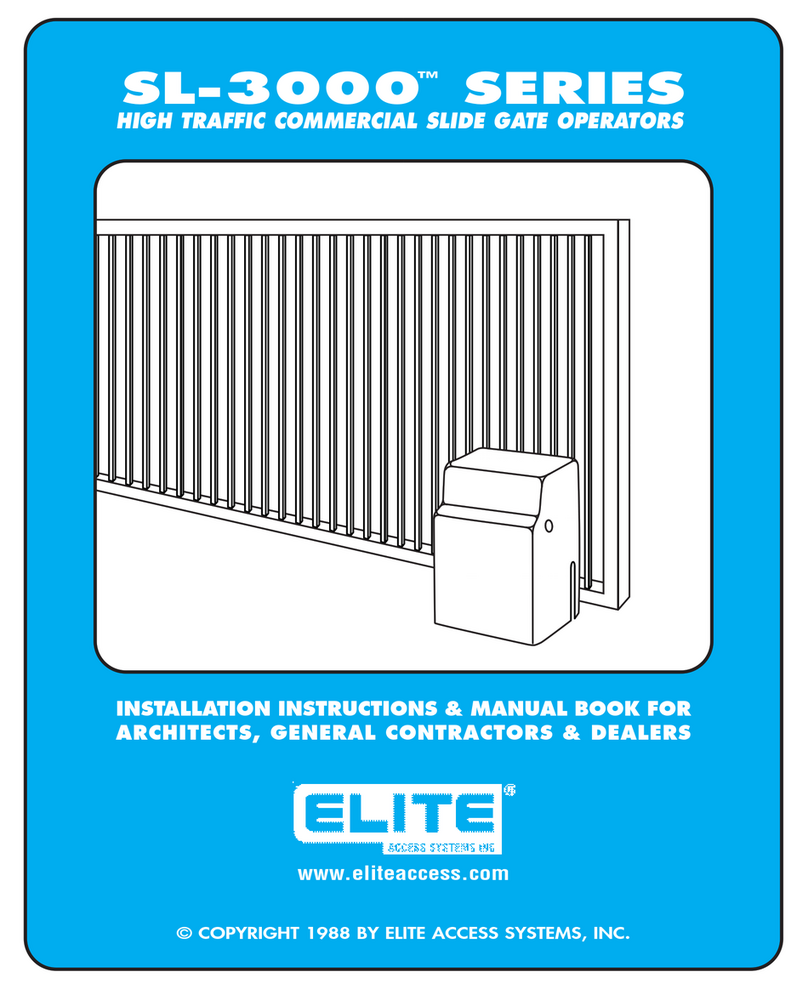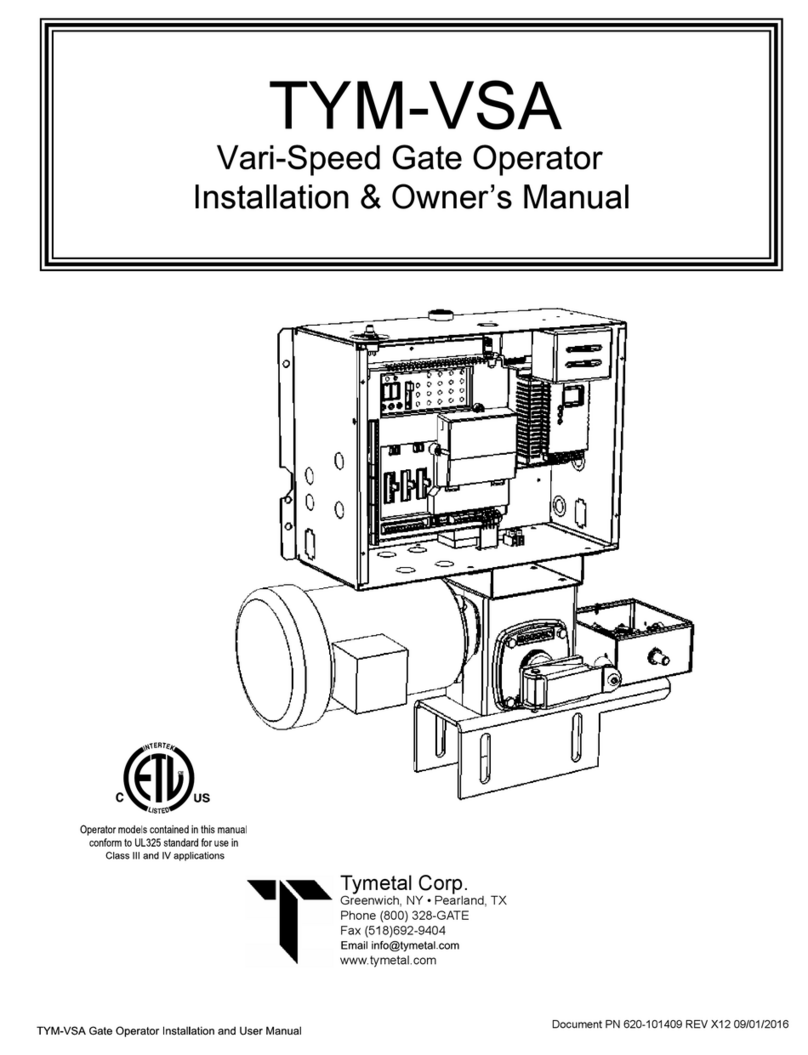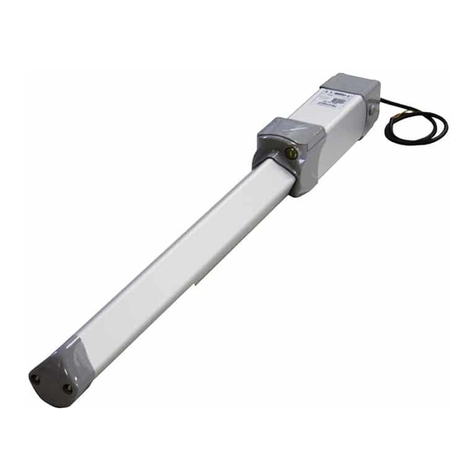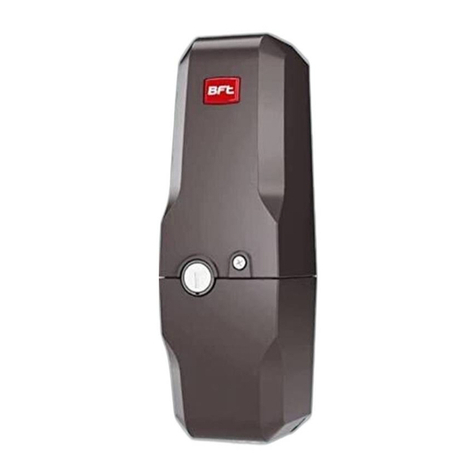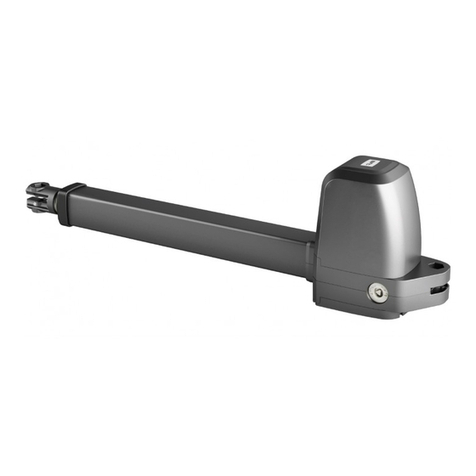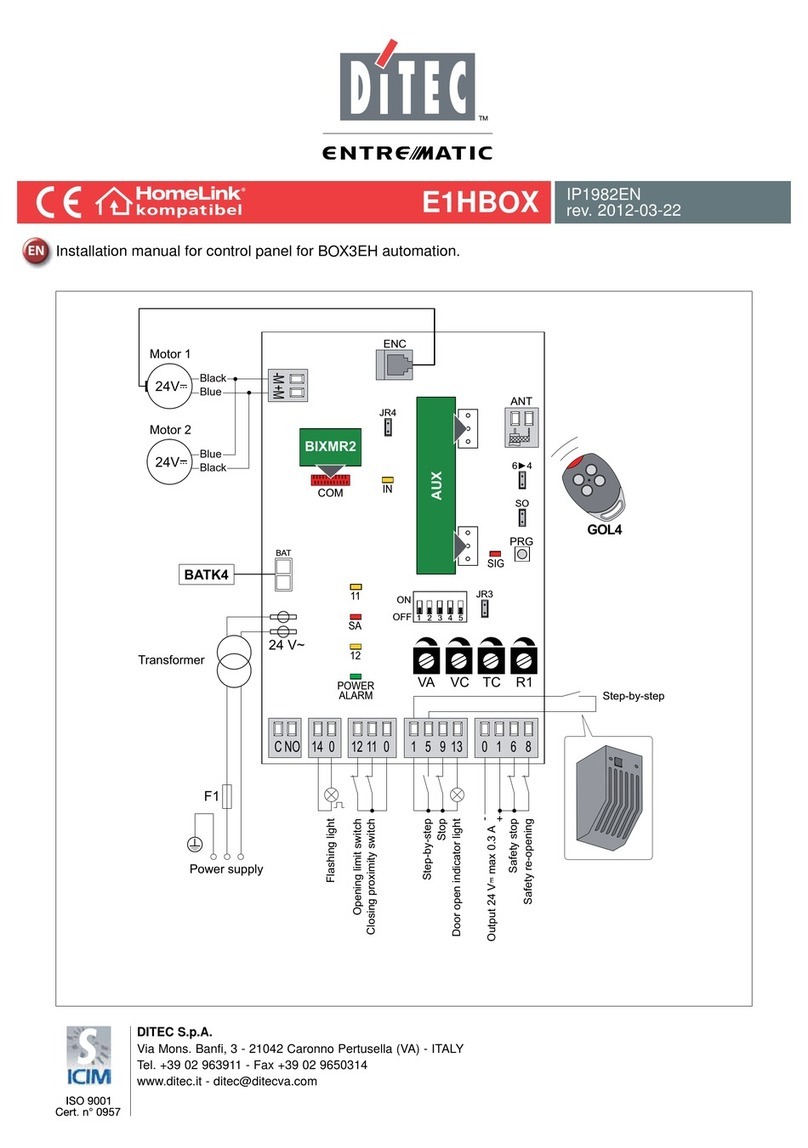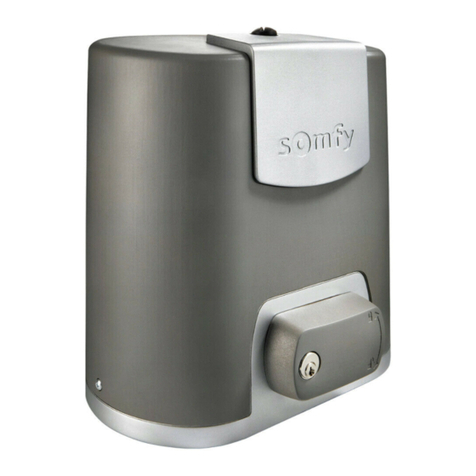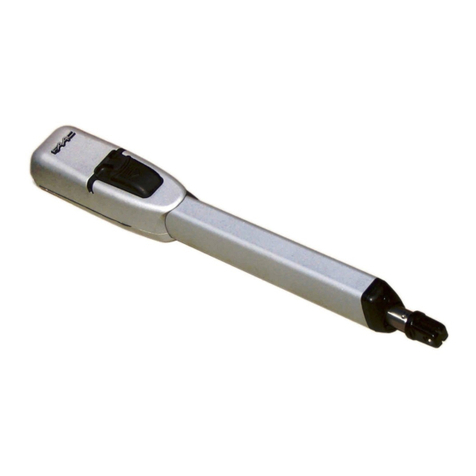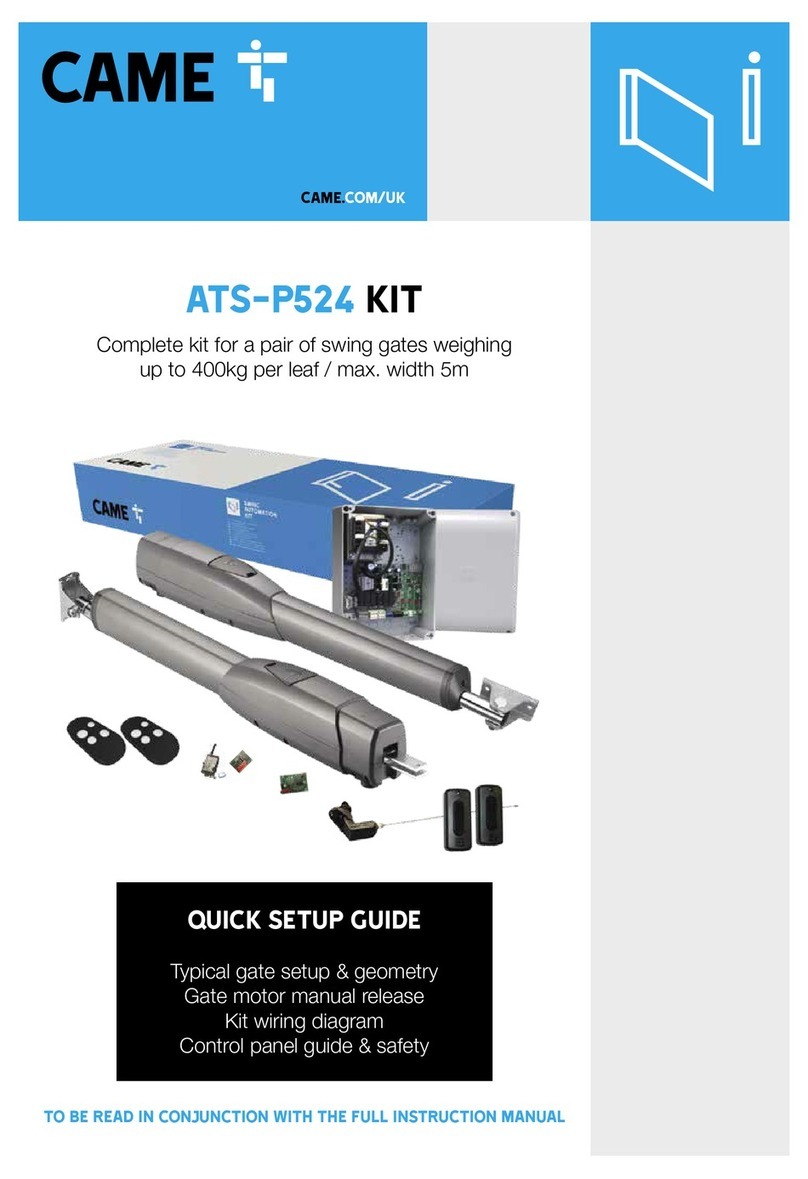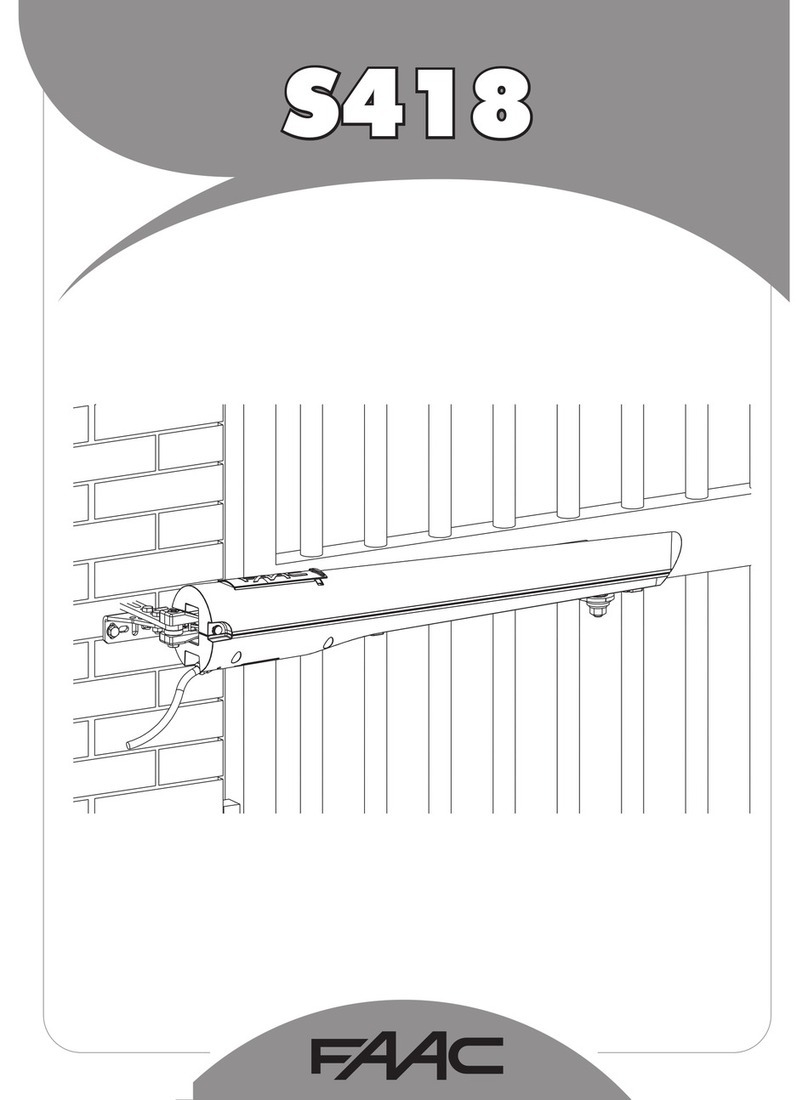Elite access systems SL-3000-UL Series User manual

V 1102
Click on the desired topic in the “Bookmarks” column or “Table of Contents” to select page.

1
© 1988 – 2002 BY ELITE ACCESS SYSTEMS, INC.
All rights reserved. No part of this manual may be
reproduced in any means: graphic, electronic or
mechanical, including photocopying without the
expressed written permission of the publisher.
Materials, components and specifications are sub-
ject to change without notice.
Do not touch
me unless you are
an authorized
service technician!
UL Listings . . . . . . . . . . . . . . . . . . . . . . . . . . . . . . . . . . . . . . . . . . . . . . . . . . . . . . . . . . . . . . . . . . .2-5
Role of Specifiers and Designers . . . . . . . . . . . . . . . . . . . . . . . . . . . . . . . . . . . . . . . . . . . . . . . . . . . .6
Role of Dealers, Installers and Trained Gate System Technicians . . . . . . . . . . . . . . . . . . . . . . . . . . .6
Role of End Users / Home Owners . . . . . . . . . . . . . . . . . . . . . . . . . . . . . . . . . . . . . . . . . . . . . . . . . .7
Horizontal Slide Gate Systems . . . . . . . . . . . . . . . . . . . . . . . . . . . . . . . . . . . . . . . . . . . . . . . . . . . . . .7
Gate Post Warning . . . . . . . . . . . . . . . . . . . . . . . . . . . . . . . . . . . . . . . . . . . . . . . . . . . . . . . . . . . . . . .8
Warning Signs . . . . . . . . . . . . . . . . . . . . . . . . . . . . . . . . . . . . . . . . . . . . . . . . . . . . . . . . . . . . . . . . . .9
Warnings and Precautions . . . . . . . . . . . . . . . . . . . . . . . . . . . . . . . . . . . . . . . . . . . . . . . . . . . . . . . .10
ELITE Recommended Setup . . . . . . . . . . . . . . . . . . . . . . . . . . . . . . . . . . . . . . . . . . . . . . . . . . . . . . .11
Type of Installations . . . . . . . . . . . . . . . . . . . . . . . . . . . . . . . . . . . . . . . . . . . . . . . . . . . . . . . . . . . . .12
How to Connect the Chain for Different Types of Installations . . . . . . . . . . . . . . . . . . . . . . . . . . . . .13
Concrete Pad and Gate Attachment . . . . . . . . . . . . . . . . . . . . . . . . . . . . . . . . . . . . . . . . . . . . . . . . .14
Gate and Operator Distance . . . . . . . . . . . . . . . . . . . . . . . . . . . . . . . . . . . . . . . . . . . . . . . . . . . . . . .15
Choosing Movement Direction . . . . . . . . . . . . . . . . . . . . . . . . . . . . . . . . . . . . . . . . . . . . . . . . . . . . .15
How to Connect Power (120V) . . . . . . . . . . . . . . . . . . . . . . . . . . . . . . . . . . . . . . . . . . . . . . . . . . . .16
Adjusting Gate Traveling Distance . . . . . . . . . . . . . . . . . . . . . . . . . . . . . . . . . . . . . . . . . . . . . . . . . .17
Adjustable Timer . . . . . . . . . . . . . . . . . . . . . . . . . . . . . . . . . . . . . . . . . . . . . . . . . . . . . . . . . . . . . . .17
Two-Way Adjustable Reversing Sensor . . . . . . . . . . . . . . . . . . . . . . . . . . . . . . . . . . . . . . . . . . . . . .18
Master and Slave with Timer On . . . . . . . . . . . . . . . . . . . . . . . . . . . . . . . . . . . . . . . . . . . . . . . . . . .19
Master and Slave with Timer Off . . . . . . . . . . . . . . . . . . . . . . . . . . . . . . . . . . . . . . . . . . . . . . . . . . .20
Solenoid / Maglock J3 Connection . . . . . . . . . . . . . . . . . . . . . . . . . . . . . . . . . . . . . . . . . . . . . . . . . .21
Instructions for Optional Systems . . . . . . . . . . . . . . . . . . . . . . . . . . . . . . . . . . . . . . . . . . . . . . . . . .22
QCC (Quick Close Circuit) . . . . . . . . . . . . . . . . . . . . . . . . . . . . . . . . . . . . . . . . . . . . . . . . . . . . . . . .22
Solenoid / Maglock Connections with Omni Option Board . . . . . . . . . . . . . . . . . . . . . . . . . . . . . . .23
Master and Slave with Omni Option Board . . . . . . . . . . . . . . . . . . . . . . . . . . . . . . . . . . . . . . . . . . .24
House Alarm / Proximity Switch Connections . . . . . . . . . . . . . . . . . . . . . . . . . . . . . . . . . . . . . . . . .24
Optional Plug-In Loop Detectors . . . . . . . . . . . . . . . . . . . . . . . . . . . . . . . . . . . . . . . . . . . . . . . . . . .25
Three Push-Button System . . . . . . . . . . . . . . . . . . . . . . . . . . . . . . . . . . . . . . . . . . . . . . . . . . . . . . .25
Terminal Input Connections . . . . . . . . . . . . . . . . . . . . . . . . . . . . . . . . . . . . . . . . . . . . . . . . . . . . . . .26
Safety Loop System . . . . . . . . . . . . . . . . . . . . . . . . . . . . . . . . . . . . . . . . . . . . . . . . . . . . . . . . . . . . .27
Exit Loop System . . . . . . . . . . . . . . . . . . . . . . . . . . . . . . . . . . . . . . . . . . . . . . . . . . . . . . . . . . . . . . .28
EMERGENCY RELEASE . . . . . . . . . . . . . . . . . . . . . . . . . . . . . . . . . . . . . . . . . . . . . . . . . .29
How to Replace the Control Board . . . . . . . . . . . . . . . . . . . . . . . . . . . . . . . . . . . . . . . . . . . . . . . . . .30
Audio Alarm . . . . . . . . . . . . . . . . . . . . . . . . . . . . . . . . . . . . . . . . . . . . . . . . . . . . . . . . . . . . . . . . . . .30
Stop Button Alarm Shut-Off . . . . . . . . . . . . . . . . . . . . . . . . . . . . . . . . . . . . . . . . . . . . . . . . . . . . . . .31
Secondary Entrapment Protection . . . . . . . . . . . . . . . . . . . . . . . . . . . . . . . . . . . . . . . . . . . . . . . . . .32
Secondary Entrapment Protection . . . . . . . . . . . . . . . . . . . . . . . . . . . . . . . . . . . . . . . . . . . . . . . . . .33
Troubleshooting LED Information / Resetting motor / Gate will not Open /Gate will not Close . . . .34
Troubleshooting Table . . . . . . . . . . . . . . . . . . . . . . . . . . . . . . . . . . . . . . . . . . . . . . . . . . . . . . . . . . .35
SL-3000 Parts Illustrations . . . . . . . . . . . . . . . . . . . . . . . . . . . . . . . . . . . . . . . . . . . . . . . . . . . . . . .36
List of SL-3000 Parts and Maintenance . . . . . . . . . . . . . . . . . . . . . . . . . . . . . . . . . . . . . . . . . . . . . .37
Available Products . . . . . . . . . . . . . . . . . . . . . . . . . . . . . . . . . . . . . . . . . . . . . . . . . . . . . . . . . . . . . .38
TABLE OF CONTENTS
11-02
In the United States, Canada and Puerto Rico,
call toll free for technical support: 1-888-ELITE-10
Release 5

UL LISTINGS AND INSTRUCTIONS
2
INSTALLATION INSTRUCTIONS REGARDING THE GATE OPERATOR
A) Install the gate operator only when:
1) The operator is appropriate for the construction and the usage
Class of the gate.
2) All openings of a horizontal slide gate are guarded or
screened from the bottom of the gate to a minimum of 4 feet
(1.2 m) above the ground to prevent a 2 1/4inch (57.15 mm)
diameter sphere from passing through the openings
anywhere in the gate, and in that portion of the adjacent
fence that the gate covers in the open position.
3) All exposed pinch points are eliminated or guarded, and
4) Guarding is supplied for exposed rollers.
B) The operator is intended for installation only on gates used for vehicles.
Pedestrians must be supplied with a separate access opening.
C) The gate must be installed in a location so that enough clearance is
supplied between the gate and adjacent structures when opening and
closing to reduce the risk of entrapment. Swinging gates shall not
open into public access areas.
D) The gate must be properly installed and work freely in both directions
prior to the installation of the gate operator.
E) Controls must be far enough from the gate so that the user is
prevented from coming in contact with the gate while operating the
controls. Controls intended to be used to reset an operator after 2
sequential activations of the entrapment protection device or devices
must be located in the line of sight of the outdoor gate or easily
accessible controls shall have a security feature to prevent unauthorized use.
F) All warning signs and placards must be installed where visible in the area of
the gate. A minimum of two placards installed. A placard is to be installed in
the area of each side of the gate and be visible to persons located on the side
of the gate on which the placard is installed.

UL LISTINGS AND INSTRUCTIONS
3
G) For a gate operator utilizing a non-contact sensor such as a photo beam:
1) See instructions on the placement of non-contact sensor for
each Type of application.
2) Care shall be exercised to reduce the risk of nuisance tripping,
such as when a vehicle trips the sensor while the gate still
moving.
3) One or more non-contact sensors shall be located where the
risk of entrapment or obstruction exists, such as the perimeter
reachable by a moving gate or barrier.
H) For a gate operator utilizing a contact sensor such as an edge sensor:
1) One or more contact sensors shall be located at the leading
edge, trailing edge and post mounted both inside and outside
of a vehicular horizontal slide gate.
2) One or more contact sensors shall be located at the bottom
edge of a vehicular vertical lift gate.
3) One or more contact sensors shall be located at the pinch point
of a vehicular vertical pivot gate.
4) A hard wired contact sensor shall be located and its wiring arranged
so that the communication between the sensor and the gate operator
is not subjected to mechanical damage.
5) A wireless contact sensor such as the one that transmits radio
frequency (RF) signals to the gate operator for entrapment
protection functions shall be located where the transmission of
the signals are not obstructed or impeded by building structures,
natural landscaping or similar obstruction. A wireless contact sensor
shall function under the intended end-use conditions.
6) One or more contact sensors shall be located on the inside and
outside leading edge of a swing gate. Additionally, if the bottom edge
of a swing gate is greater than 6 inches (152 mm) above the ground at
any point in its arc of travel, one or more contact sensors shall be
located on the bottom edge.

UL LISTINGS AND INSTRUCTIONS
4
IMPORTANT SAFETY INSTRUCTIONS
WARNING - To reduce the risk of injury or death:
1. READ AND FOLLOW ALL INSTRUCTIONS.
2. Never let children operate or play with gate controls. Keep the
remote control away from children.
3. Always keep people and objects away from the gate.
NO ONE SHOULD CROSS THE PATH OF THE MOVING GATE.
4. Test the gate operator monthly. The gate MUST reverse on
contact with a rigid object or stop when an object activates
the non-contact sensors. After adjusting the force or the limit of
travel, retest the gate operator, Failure to adjust and retest the gate
operator properly can increase the risk of injury or death.
5. Use the emergency release only when the gate is not moving. Make
sure the power for the gate operator is off.
6. KEEP GATES PROPERLY MAINTAINED. Read the manual. Have a
qualified service person make repairs to the gate or gate hardware.
7. The entrance is for vehicles only. Pedestrians must use separate
entrance.
8. SAVE THESE INSTRUCTIONS.

UL LISTINGS AND INSTRUCTIONS
5
Gate – A moving barrier such as a swinging, sliding, raising
lowering, rolling, or like, barrier, that is a stand-alone passage
barrier or is that portion of a wall or fence system that controls entrance
and/or egress by persons or vehicles and completes the perimeter of a
defined area.
Vehicular horizontal slide-gate operator (or system) – A
vehicular gate operator (or system) that controls a gate which slides in a
horizontal direction that is intended for use for vehicular entrance or exit
to a drive, parking lot, or the like.
Residential vehicular gate operator – Class I – A
vehicular gate operator (or system) intended for use in
a home of one-to four single family dwelling, or a
garage or parking area associated therewith.
Commercial/General access vehicular gate
operator – Class II – A vehicular gate opera-
tor (or system) intended for use in a commer-
cial location or building such as a multi-family
housing unit (five or more single family units)
hotel, garages, retail store or other building
servicing the general public.
Commercial/General access vehicular
gate operator – Class III – A vehicular gate
operator (or system) intended for use in a
industrial location or building such
as a factory or loading dock area or other
locations not intended to service the
general public.
Restricted access vehicular gate operator –
Class IV – A vehicular gate operator (or sys-
tem) intended for use in a guarded industrial
location or building such as an airport security
area or other restricted access locations not
servicing the general public, in which unautho-
rized access is prevented via supervision by
security personnel.

6
Specifiers and designers should design an automatic vehicular gate system to:
•Incorporate UL 325 compliant equipment.
•Utilize an operator suited for gate system type, size, frequency of use, location and user population
(Refer to UL 325 for usage class definitions)
•Separate pedestrian access from vehicle access.
•Reduce or eliminate pinch points.
•Reduce risk of entrapment injuries by minimizing all gaps in the gate and enclosing the area of the
travel of the gate.
•Secure controls from unauthorized use..
•Locate all controls out of reach from the gate.
•Allow the user full view of the gate when operating.
•Consider special populations, such as children or the elderly.
•Conspicuously display all warnings and instructions.
•Be consistent with DASMA’s Automatic Gate Opener System Safety Guide.
ROLE OF SPECIFIERS AND DESIGNERS
Installers, during the course of the installation proceedings for each job, should:
•Confirm that the gate operator being installed is appropriate for the application.
•Confirm that the gate is designed and built according to current published industry standards.
•Confirm that all appropriate features and accessory devices are being incorporated, including both
primary and secondary entrapment protection devices.
•Make sure that the gate works freely before installing the operator.
•Repair or service worn or damaged gate hardware before installing the operator.
•Eliminate all gaps in the sliding gate below a 4 foot height that permit a 2 1/4 inch sphere to pass
through any location, including the area of the adjacent fence covered when the gate is in the open
position.
•Install the gate operator according to the manufacturer’s installation instructions.
•Adjust the operator clutch or load-sensing device to the minimum force setting that allows reliable gate
operation.
•Install operator inside fence line (DO NOT install operator on public side of fence line)
•Install a proper electrical ground to a gate operator.
•Install keypad controls where users cannot touch, or reach through gate while operating controls.
•Install controls where user has full view of gate operation.
•Install all warning signs (In accordance with UL 325) on both sides of the gate to warn persons in the
area of potential hazards associated with automatic vehicular gate operation.
•test all features for proper functions before placing the automatic vehicular gate into service.
•Demonstrate the basic functions and safety features of the gate system to owners/end users/general
contractors, including how to turn off power and how to operate the manual disconnect feature.
•Leave safety instructions, product literature, installation manual and maintenance manual with end
user.
•Explain to the owners the importance of a service contract that includes a routine re-testing of the
entire system including the entrapment protection devices, and explain the need for the owners to
insure that this testing is performed routinely.
•Offer the owner/end user a maintenance contract, or contact them regularly to offer maintenance.
ROLE OF DEALERS, INSTALLERS AND
TRAINED GATE SYSTEM TECHNICIANS

7
End users should be made aware that they must:
•Contact a trained gate systems technician to maintain and repair the gate system (End users should
never attempt to repair the gate)
•Retain and utilize the installation and maintenance manual and safety instructions.
•Routinely check of all gate operator functions and gate movement.
•Discontinue use if safety systems operate improperly, the gate is damaged, or the gate is difficult to
move.
•Never overtighten the operator clutch of load sensing device to compensate for a damaged or stiff
operating gate.
•Prominently display and maintain warning signs on both sides of the gate.
•Keep all obstructions clear of the vicinity of the path of the gate system.
•Actively discourage pedestrian use of the vehicular gate operating system.
•Prevent anyone from playing near any part of the gate system.
•Never allow anyone to climb under, over or through a gate or the adjacent fence area.
•Never allow children to operate gate
•Keep portable controls out of reach of children.
•Never allow anyone to install an operating control within reach of the gate.
•Never allow anyone to install a horizontal slide gate with exposed rollers or openings large enough to
allow a sphere of 2 1/4 inches to pass through any portion of the gate below a 4 foot height, including
the area of the adjacent fence covered when the gate is in the open position.
•Always be certain that the gate area is clear of pedestrians before operating the gate.
ROLE OF END USERS/HOME OWNER
•Entrapment Zone Hazard - Body parts may become entrapped between a gate and a stationary object
when the gate begins to move, which can result in serious injury or death. Pedestrians must stay clear
of the gate path, and any area where gate motion is close to stationary objects.
•Pinch Points Hazard - In open rollers gates, hands can get caught between the top of the gate and top
rollers, which can result in serious injury. Feet can be injured in the same manner between the bottom
of the gate and bottom rollers. Covers to guard these pinch points should be installed.
•Crush Hazard - In picket gates, body parts positioned between the bars can become seriously
mutilated when the gate begins to move, which can result in serious injury or death. If any openings
are greater than 2 1/4 inches, a screen should be installed over the gate (in accordance with the
provisions of UL 325) to prevent persons from reaching through and/or passing through the gate. In l
ike manner, screening should also be applied to the adjacent fence area covered by the gate when in
the fully open position.
Be sure that warning signs are prominently displayed on both sides of the gate and any other place where
danger exists.
HORIZONTAL SLIDE GATE SYSTEMS

Elite only recommends installation of catch rollers on the side of a catch post or wall with a minimal distance
of half an inch between the rollers and gate. Also when fully open the end of the sliding gate must stop at least
five inches from a wall.
Closing
Closing
Incorrect Correct
Non-Pinch
Rollers
Wall
Wall
Non-Pinch
Rollers
Gate
1/2" Clearance
Between Gate
and Rollers
Minimum of 5" Clearance Between
Gate and Wall or Other Object
Gate in Fully
Opened Position
1/4" Clearance from Top of Gate
5"
8
GATE POST WARNING
For safety reasons, a physical stop must be installed on the gate prior to installa-
tion of the gate operator. This will assure that the gate does not exceed movement
limits and derail while opening or closing fully.
IMPORTANT NOTICE!
Because the coasting distance may vary due to changes in temperature, Elite does NOT recommend the
installation of a stop or catch post in front of the gates path. To do so will cause the gate to hit the post in
certain instances.
CAUTION!

Warning Signs Attached on Both Sides of Gate
Warning Sign Clearly Visible on Operator
WARNING SIGNS
9
IMPORTANT!
Installers are required to adhere to this
procedure: The UL required Warning
Signs must be installed in plain view
and on both sides of each gate
installed. Each sign is made with fas-
tening holes in each corner and should
be permanently secured in a suitable
manner. Also the warning sticker
should be placed on the operator so it
is clearly visible. Installers should keep
photos of signs on gate in their
records.

WARNINGS AND PRECAUTIONS
10
Property owners must never let pedestrians cross the path of a moving gate!
Property owners must never allow anyone to hang or ride on the gate!
Property owners must never mount any gate operating device near the gate's path!
The SL-3000 Series is for Vehicular Gate Use Only!
NOT for Use on Any Pedestrian: Passageways, Doorways or Gateways.

ELITE RECOMMENDED SETUP
SL-3000-UL-DM
Two-1/2 hp Motors, 120 VAC, 4.7 Amp.
Maximum Gate Travel – 37 ft.
Maximum Gate Weight – 800 lbs.
Maximum Pull – 100 lbs.
SL-3000-UL
1/2 hp Motor, 120 VAC, 4 Amp.
Maximum Gate Travel – 37 ft.
Maximum Gate Weight – 1000 lbs.
Maximum Pull – 105 lbs.
SL-3000-UL-1HP
Two-1/2 hp Motors, 120 VAC, 8.4 Amps.
Maximum Gate Travel – 37 ft.
Maximum Gate Weight – 2000 lbs.
Maximum Pull – 180 lbs.
Recommended Gate Setup Configuration
Warning Signs
Attached
on Both Sides
of Gate
Non-Pinch
Rollers
Sensor Edges
Sensor
Edges
Non-Pinch
Rollers
Warning Sign Clearly
Visible on Operator
3" Max. Width
(2"x 2" Screen)
Weld Physical Stops on
Both Ends of Gate Rail
Be sure to read and follow all Elite and UL instructions before installing and
operating any Elite products. Elite Access Systems, Inc. is not responsible for
improper installations or failure to comply with local building codes.
Pedestrians Must have a Separate Walkway!
11

Physical Stop
Physical Stop
Physical Stop
Physical Stop
Idler Wheel must have Safety Cover
CAUTION!
TYPE OF INSTALLATIONS
12
It is highly recommended installing over-travel stops at both ends
of the gate rail in any type of installation, to prevent derailing.
REAR INSTALLATIONS
REASON: CHAIN IS NOT VISIBLE
FRONT INSTALLATIONS
REASON: COST EFFICIENT
CEILING MOUNT UNDERGROUND
REASON: SPACE EFFICIENT - CHAIN IS NOT VISIBLE

CONNECTING THE CHAIN
13
FRONT INSTALLATION
Weld front bracket with gate in open position. Weld rear bracket with gate in closed position.
17.5"
2"
Cut the chain access slot on the one side
of the cover to the exact specifications.
Important: For safe operation of the gate
opener do not cut the slots any wider or
longer than shown. DO NOT modify the
housing in any way other than specified.
REAR INSTALLATION – COVER MODIFICATION
Make sure the idler wheel has a safety cover.
Cut the cover 17 1/2 inches high. (See below)

CONCRETE PAD AND GATE ATTACHMENT
6"
Concrete (Reinforced Recommended)
Above
Ground
Below
Ground 24"
24" 24"
Rear Installation
Top Inside View
Front Installation
Physical
Stops on Both
Ends of Rail
Cover over
Wheel
Physical
Stops on
Both Ends
of Rail
10"
8"
12"
12"
Red Head Fastener
1/2" x 3 1/2"
Conduit Area Without
Battery Back-Up
Follow gate
manufacturers
specifications
and local
building codes
for setting post.
Suggested installation for dirt
ground. The measurements
depend on the type of ground
(ie., asphalt, cement, dirt)
13"
8.25"
14

GATE AND OPERATOR DISTANCE
15
CHOOSING MOVEMENT DIRECTION
15
4"
Minimum
Distance
Between Gate
and Sprocket
Correct Installation Incorrect Installation
OUT
IN
OUT
IN
Open to the Left
Open to the Right
Omni Control Board
CENTER SAFETY EXIT
CENTER SAFETY EXIT
FIRE
DEPT.
13
STRIKE
OPEN RADIO
RECEIVER
TIMER
SYSTEMON
EXIT
LOOP
ALARM
SENSOR
REVERSE
SENSOR
OPEN
STOPCLOSE
SAFETY
LOOP CENTER
LOOP
GATE
LOCKED
60 POWER
OVERLOAD
OFF
W4
OPENLEFT
DC-BACKUP
ALARMSENSOR
OPENRIGHT
3
SENSORS
RESET
MOTOR
13
13
COMMAND
PROCESSED
ON
GB
MSLINK
A
MADEIN USA
RADIO
MER 60
OFF 13
ON
OPEN LEFT OPEN RIGHT
Omni Control Board
CENTER SAFETY EXIT
CENTER SAFETY EXIT
FIRE
DEPT.
13
STRIKE
OPEN RADIO
RECEIVER
TIMER
SYSTEMON
EXIT
LOOP
ALARM
SENSOR
REVERSE
SENSOR
OPEN
STOPCLOSE
SAFETY
LOOP CENTER
LOOP
GATE
LOCKED
60 POWER
OVERLOAD
OFF
W4
OPENLEFT
DC-BACKUP
ALARMSENSOR
OPENRIGHT
3
SENSORS
RESET
MOTOR
13
13
COMMAND
PROCESSED
ON
GB
MSLINK
A
MADEIN USA
RADIO
MER 60
OFF 13
ON
OPEN LEFT OPEN RIGHT

HOW TO CONNECT POWER (120V)
16
Use U.L. Listed Conduit for
Supplying Power to the Unit
Suggestion:
Seal all open holes of
electronic box with
sealant when finished
wiring.
Do Not Use This Outlet Unless You Are
An Authorized Service Technician
Minimum:
15-amp
breaker
switch per
operator
needed
Gate Operator MUST be Properly Grounded
Caution: ELITE ACCESS SYSTEMS, INC. is not responsible for conflicts between the information listed in the above chart and the requirements
of your local building codes. The information is for suggested use only. Check your local codes before installation.
White Wires (Neutral)
Black Wires (120 VAC)
Green Wires (Ground)
16 Gauge
150 Feet
14 Gauge
250 Feet
12 Gauge
400 Feet
10 Gauge
650 Feet
8 Gauge
1000 Feet
4 Gauge
2200 Feet
WIRE GAUGE REQUIREMENT FOR 120 VAC POWER SUPPLY: 1/2 HP AND DUAL MOTOR ONLY
W4
OFF
ON
OFF
ON
Earth Ground Rod Installation
12 gauge wire
Elite Access Systems is not responsible for improper
installation or failure to comply with all necessary local
building codes.
8 ft
The earth ground rod must be located within 3 feet of the Elite gate
operator. Use the proper type earth ground rod for your local area.
The ground wire must be a single, whole piece of wire. Never splice two
wires for the ground wire. If you should cut the ground wire too short,
break it, or destroy its integrity, replace it with a single wire length.
Proper grounding gives an electrical charge, such as from an electrical static
discharge or a near lightning strike, a path from which to dissipate its energy safely
into the earth.
Without this path, the intense energy generated by lightning could be directed
towards the Elite gate operator. Although nothing can absorb the tremendous power
of a direct lightning strike, proper grounding can protect the gate operator in most
cases.
Before digging more than 18" deep, contact local underground utility companies.
Avoid damaging gas, power, or other underground utility lines.

ADJUSTING GATE TRAVELING DISTANCE
CENTER SAFETY EXIT
CENTER SAFETY EXIT
FIRE
DEPT.
13
STRIKE
OPEN RADIO
RECEIVER
TIMER
SYSTEM ON
EXIT
LOOP
ALARM
SENSOR
REVERSE
SENSOR
OPEN
STOPCLOSE
SAFETY
LOOP CENTER
LOOP
GATE
LOCKED
60 POWER
OVERLOAD
OFF
W4
OPEN LEFT
DC-BACKUP
ALARMSENSOR
OPEN RIGHT
3
SENSORS
RESET
MOTOR
13
13
COMMAND
PROCESSED
ON
GB
MS LINK
A
MADE IN USA
TIMER
NSOR
60
OFF
OPEN LEFT OPEN RIGHT
3
13
ON
Timer ON
TIMER
NSOR
60
OFF
OPEN LEFT OPEN RIGHT
3
13
ON
Timer OFF
Set Timer
1 to 60 seconds
Timer can be set from 1 to 60 seconds (Timer ON),
or for push open/push close type operation (Timer OFF).
Note: When using master/slave gates, the gate that takes the longest to open should be set as the master.
ADJUSTABLE TIMER
17
Limit Nut
Lock Plate
Each notch indicates an
estimated 1 inch of gate travel
Nut
Push Plate
1.Turn the Power OFF!
2. Push the limit nut lock plate inward.
Roll the nut to the direction desired.
3. Place the plate back in the notch
4. Turn the machine off.
5. If you need more adjusting,
repeat the process.
Before Adjusting, Do the Following:

TWO-WAY ADJUSTABLE REVERSING SENSOR
18
DO NOT Touch Alarm Sensor
Adjusted by Qualified Service Personnel
The level of sensitivity has to do with the weight of
the gate and the condition of installation. To make a
better gate system, use any of Elite's power wheels.
Too sensitive = If the gate stops or reverses by
itself.
Not sensitive enough = If the gate hits a car and
does not stop or reverse.
CAUTION: If the power supply to the gate operator is less than 99 volts, adjust the alarm by turning
the alarm adjustment counter-clockwise enough to actuate the alarm when obstructed but not
sensitive enough for false triggering to occur.
CENTER SAFETY EXIT
CENTER SAFETY EXIT
FIRE
DEPT.
13
STRIKE
OPEN RADIO
RECEIVER
TIMER
SYSTEM ON
EXIT
LOOP
ALARM
SENSOR
REVERSE
SENSOR
OPEN
STOPCLOSE
SAFETY
LOOP CENTER
LOOP
GATE
LOCKED
60 POWER
OVERLOAD
OFF
W4
OPEN LEFT
DC-BACKUP
ALARMSENSOR
OPEN RIGHT
3
SENSORS
RESET
MOTOR
13
13
COMMAND
PROCESSED
ON
GB
MS LINK
A
MADE IN USA
REVERSE
SENSOR
13
Maximum
Sensitivity
Minimum
Sensitivity

19
StrikeOpen
PushButton
StrikeOpen
PushButton
24VoltsDC
24VoltsDC
FireDept
KeySwitch
FireDept
KeySwitch
M/SLink
M/SLink
Class2
Supply
Class2
Supply
Center
Loop
Center
Loop
Safety
Loop
Safety
Loop
Radio
Receiver
Radio
Receiver
Exit
Loop
Exit
Loop
GG BB AA
–– ++
OmniControl SurgeSuppressor
P/NQ410
PatentPending
P/NQ410
PatentPending
®
StrikeOpen
PushButton
StrikeOpen
PushButton
24VoltsDC
24VoltsDC
FireDept
KeySwitch
FireDept
KeySwitch
M/SLink
M/SLink
Class2
Supply
Class2
Supply
Center
Loop
Center
Loop
Safety
Loop
Safety
Loop
Radio
Receiver
Radio
Receiver
Exit
Loop
Exit
Loop
GG BB AA
–– ++
OmniControl SurgeSuppressor
P/NQ410
PatentPending
P/NQ410
PatentPending
®
CENTER SAFETY EXIT
CENTER SAFETY EXIT
FIRE
DEPT.
13
STRIKE
OPEN RADIO
RECEIVER
TIMER
SYSTEM ON
EXIT
LOOP
ALARM
SENSOR
REVERSE
SENSOR
OPEN
STOPCLOSE
SAFETY
LOOP CENTER
LOOP
GATE
LOCKED
60 POWER
OVERL OAD
OFF
W4
OPEN LEFT
DC-BACKUP
ALARMSENSOR
OPEN RIGHT
3
SENSORS
RESET
MOTOR
13
13
COMMAND
PROCESSED
ON
GB
MS LINK
A
MADEIN USA
CENTER SAFETY EXIT
CENTER SAFETY EXIT
FIRE
DEPT.
13
STRIKE
OPEN RADIO
RECEIVER
TIMER
SYSTEM ON
EXIT
LOOP
ALARM
SENSOR
REVERSE
SENSOR
OPEN
STOPCLOSE
SAFETY
LOOP CENTER
LOOP
GATE
LOCKED
60 POWER
OVERLOAD
OFF
W4
OPEN LEFT
DC-BACKUP
ALARMSENSOR
OPEN RIGHT
3
SENSORS
RESET
MOTOR
13
13
COMMAND
PROCESSED
ON
GB
MS LINK
A
MADE IN USA
TIMER
TIMER
NSOR
60
OFF
OPEN LEFT OPEN RIGHT
3
13
ON
ON
MAXIMUM
Counterclockwise
Setting
TIMER
TIMER
NSOR
60
OFF
OPEN LEFT OPEN RIGHT
3
13
ON
ON
Master Omni Board
Slave Omni Board
Adjust Time Desired
0 to 60 seconds
Slave Timer “ON”
Master Timer “ON”
1. Connect Gfrom the master surge suppressor to Gof the slave surge
suppressor.
2. Connect Bfrom the master surge suppressor to Bof the slave surge
suppressor.
3. Connect Afrom the master surge suppressor to Aof the slave surge
suppressor.
4. Turn timers on BOTH Omni boards to the “ON” position
5. Turn the SLAVE Timer adjustment all the way Counterclockwise
6. Use MASTER timer ONLY to select the desired time
Master and Slave Boards are Interchangeable Master Omni Board Primary Control for System
CHASSIS
GROUND
M/SLink
M/SLink
P/N Q410
PatentPending
P/N Q410
PatentPending
Center
Loop
Center
Loop
GG BB AA
CHASSIS
GROUND
M/SLink
M/SLink
P/N Q410
PatentPending
P/N Q410
PatentPending
Center
Loop
Center
Loop
GG BB AA
Use Shielded Twisted Wires
to Connect the Surge
Suppressor of each
Gate Operator Together
Use low voltage wires in separate conduit to connect gate operators together
Caution: Never run high voltage and low voltage wires in same conduit
MASTER AND SLAVE WITH TIMER ON
This manual suits for next models
3
Table of contents
Other Elite access systems Gate Opener manuals
Popular Gate Opener manuals by other brands
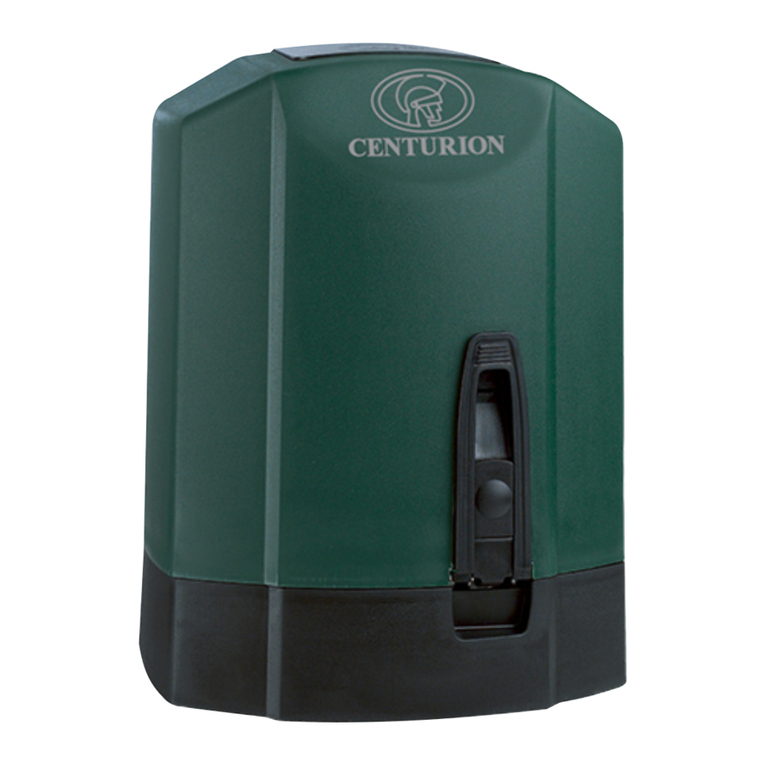
Centurion
Centurion D10 installation manual
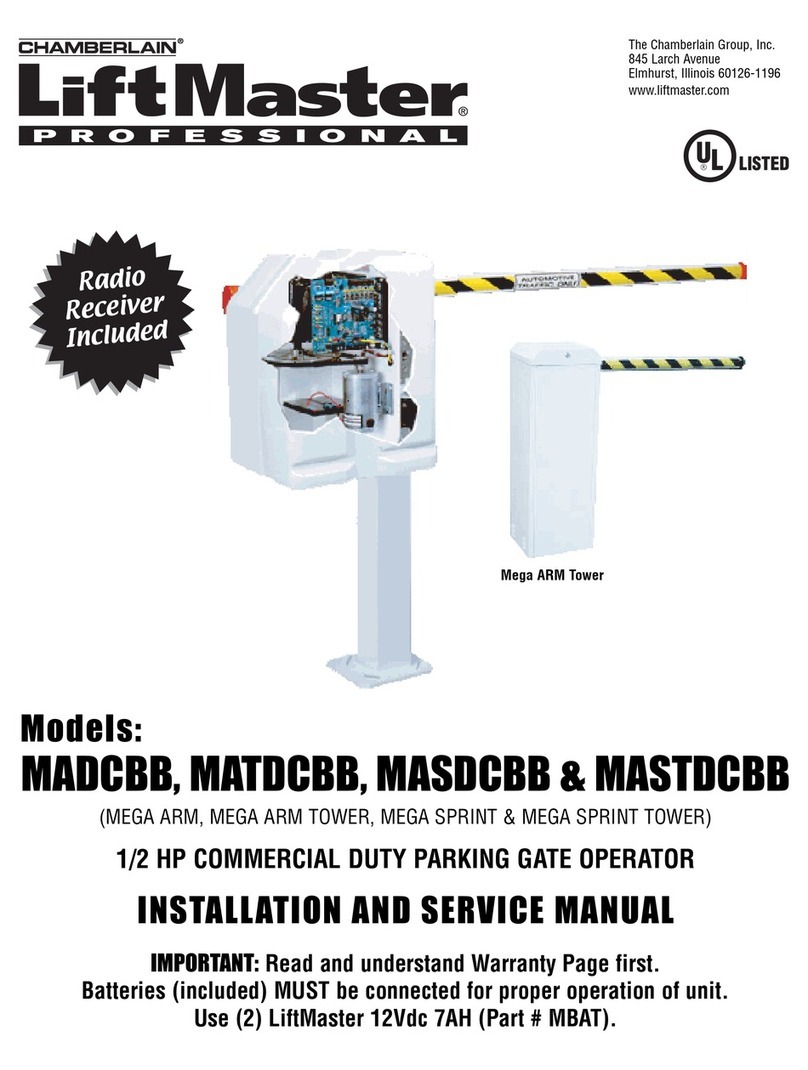
Chamberlain
Chamberlain MEGA ARM / MEGA ARM TOWER Installation and service manual
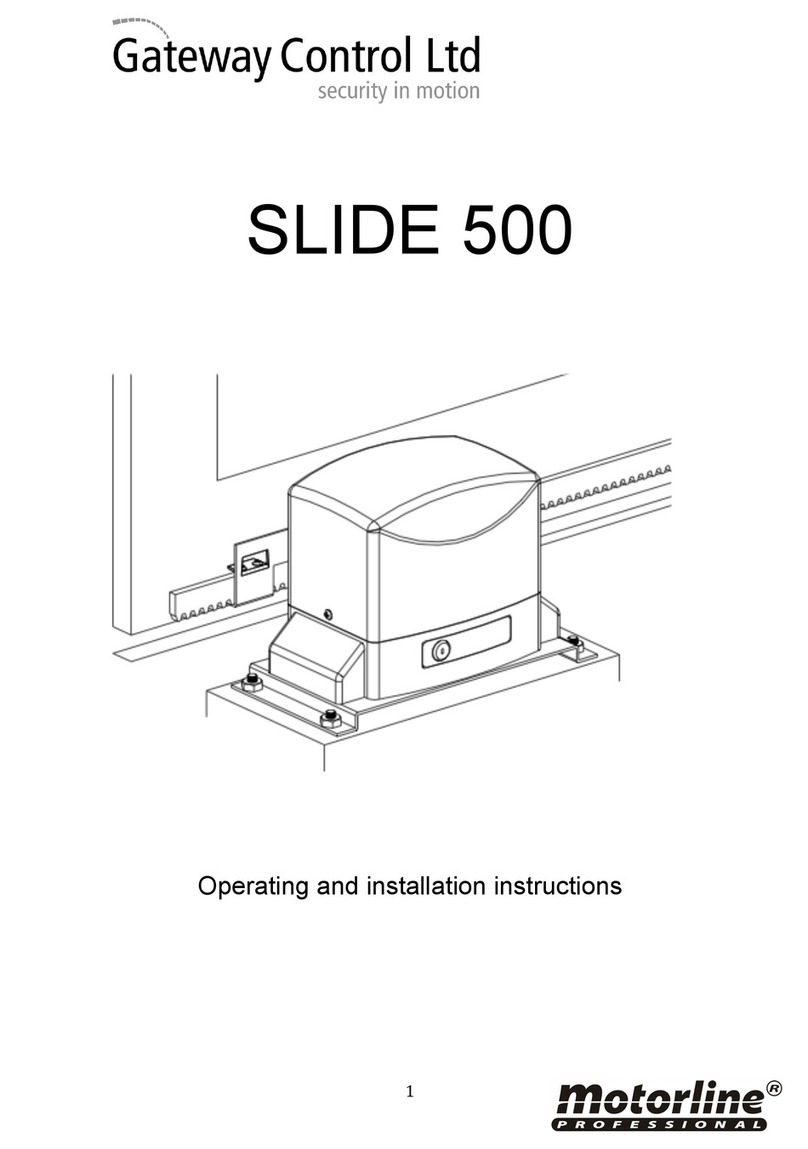
Motorline professional
Motorline professional Gateway Control SLIDE 500 Operating and installation instructions
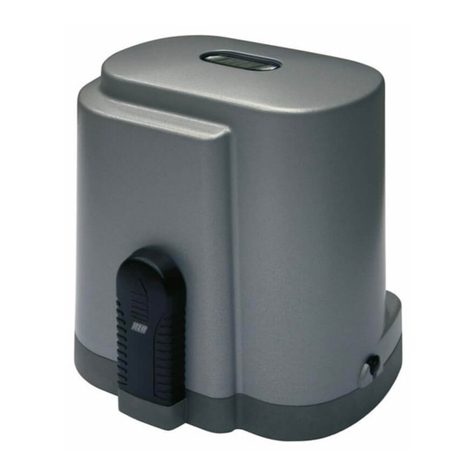
RIB
RIB K500 manual
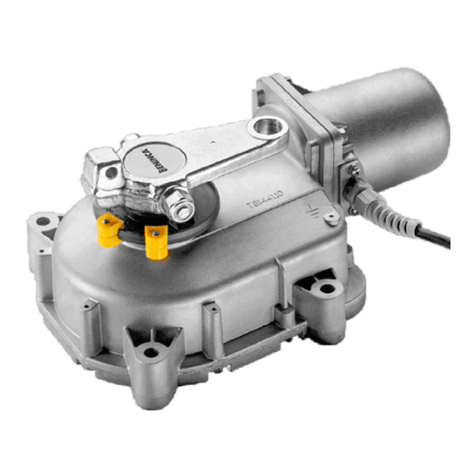
Beninca
Beninca DU.IT14NE Operating instructions and spare parts catalogue
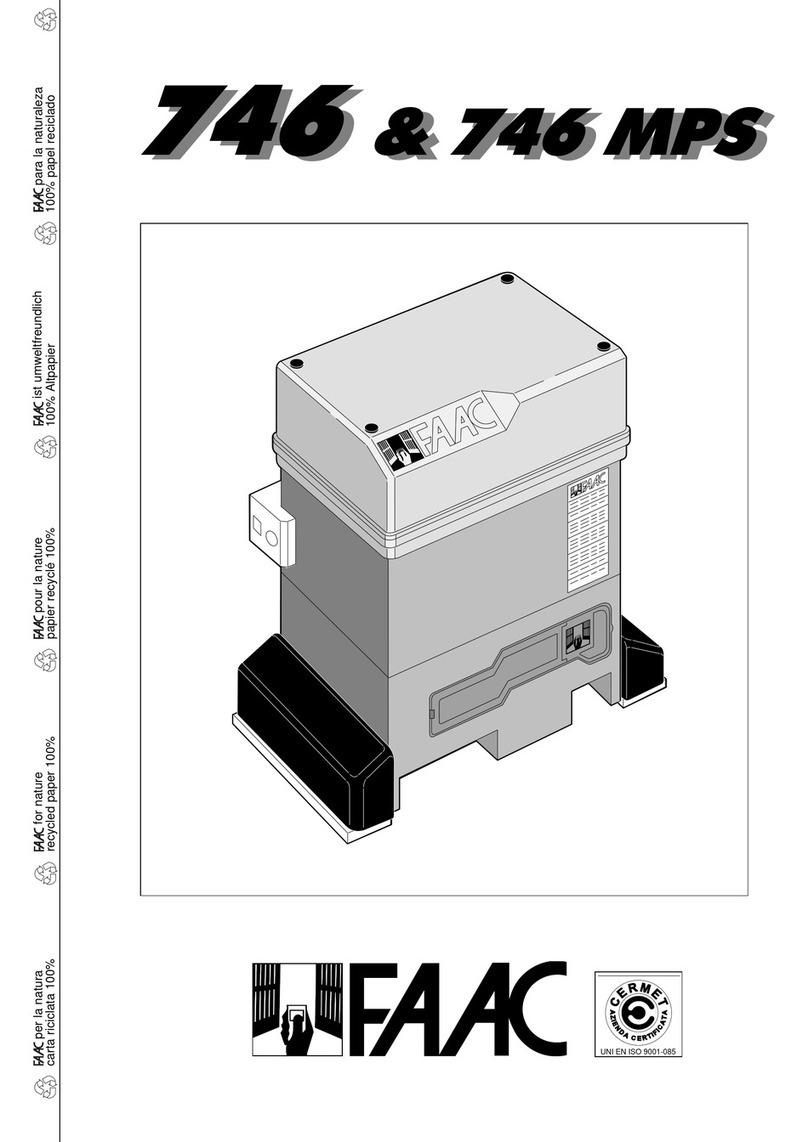
FAAC
FAAC 746 ER CAT manual
